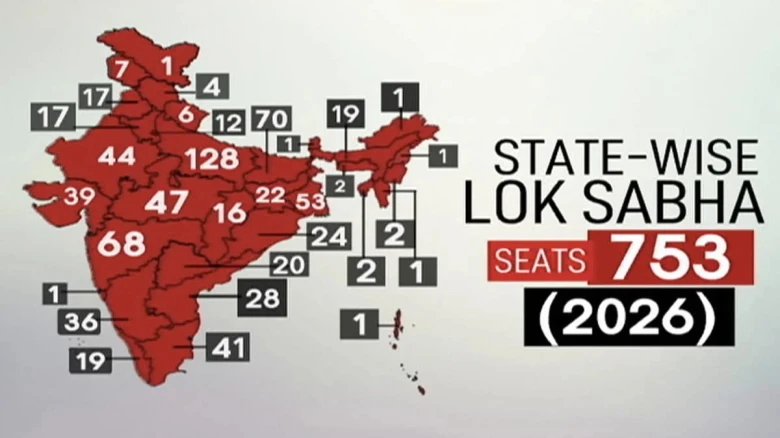The southern states are likely to have a marginal rise, further pushing them in terms of electoral heft and representation...
Digital Desk: Once the Women's Reservation Bill is implemented, will redraw the electoral map of India. The number of Lok Sabha seats will rise from 543 to a staggering 753 as a result of the census and delimitation process that will precede the implementation of reservation. As expected, Uttar Pradesh, which already sends the most MPs to Parliament, would see the biggest jump. The southern states are likely to have a marginal rise, further pushing them in terms of electoral heft and representation.
India is expected to have a population of 1.42 billion in 2026, and this data will be crucial for delimitation, which redraws a constituency's boundaries based on its population.
Based on those estimates, Karnataka's Lok Sabha representation is expected to increase by just eight seats, from 28 to 36, in 2026. Telangana will rise one seat, from 17 to 20, Andhra Pradesh from 25 to 28, and Tamil Nadu from 39 to 41.
The number of Kerala's Lok Sabha seats would decrease from 20 to 19, which is the state that has best controlled population growth.
In contrast, there will be an increase from 80 to 128 seats in Uttar Pradesh. There would be much greater representation for the other northern states as well.
Another state with a rapidly growing population is Bihar, which will have 70 seats instead of the current 40.
Madhya Pradesh now has 29 Lok Sabha seats; which after delimitation, there should be 47. After delimitation, there would likely be a rise of 20 seats in Maharashtra, from 48 to 68. Rajasthan's population will increase from the present 25 to 44.
The huge numerical discrepancy between the country's northern and southern regions is likely to elicit criticism from the opposition.
Amit Shah, the Union Home Minister, stated in the Lok Sabha on September 21 that the census and delimitation will be undertaken after next year's general election. According to sources, the administration will also address the representation gap between the North and South.
Since 1977, the number of Lok Sabha seats has not increased.
The Delimitation Commission has so far been formed four times: in 1952, 1963, 1973, and 2002. After the 1981 and 1991 census data, there was no delimitation. Although it took place after the 2001 census, there was no increase in the number of seats.
When quotas are implemented, there will be 181 more women members in the Lok Sabha than there are now (82). The state assembly will likewise reserve 33% of the seats for women.
The President will appoint members to the Delimitation Commission, which will work closely with the Election Commission. Members will include retired judges of the Supreme Court. The commission's judgment cannot be challenged.

Leave A Comment